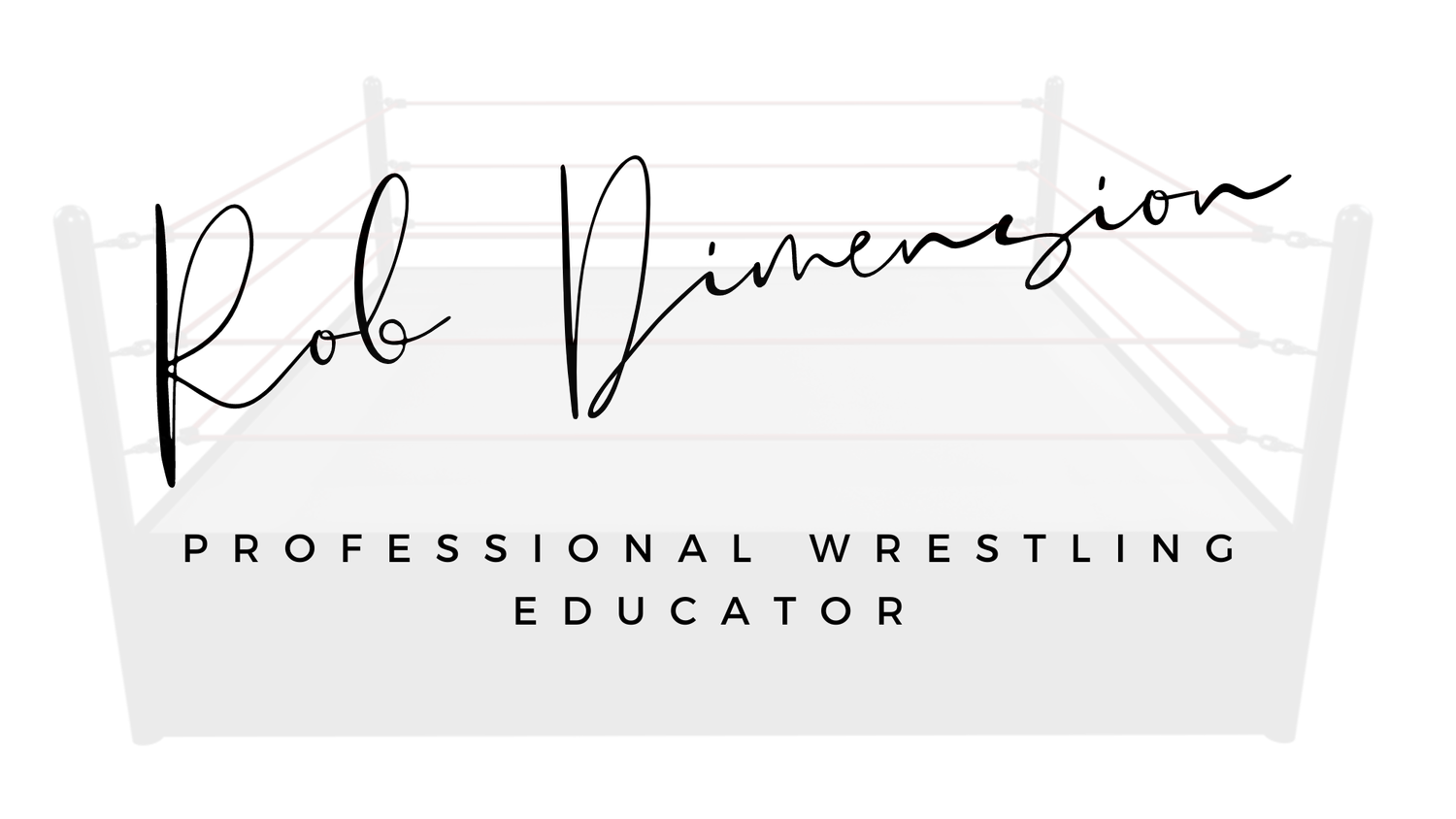Rob Dimension presents facts, theories and traditions within the world of Professional Wrestling. This assemblence of tricks and tools are gathered to be passed down to prepare those ready to learn. Branding, public speaking and social media behavior information. Acting and improv lessons plus what it takes for successful transition to work television on a national level. Share with the wrestling community.
Coming Soon
Facial and body exaggeration are essential tools for wrestlers performing in the ring, more so for television. They allow wrestlers to project their emotions and intentions to the audience, even from a distance. This is especially important in large venues, where wrestlers may be far away from the back rows.
Here are some ways that wrestlers use facial and body exaggeration on stage:
Enlarging facial features: Wrestlers can exaggerate their facial features by widening their eyes, opening their mouths wide, or raising their eyebrows. This helps to make their expressions more visible to the audience.
Slowing down movements: Wrestlers can also exaggerate their movements by slowing them down. This can help to create a sense of suspense or drama.
Using gestures: Wrestlers can use gestures to emphasize their words or actions. For example, a wrestler might point their finger at another wrestler to accuse them of something.
The extent to which an wrestler exaggerates their facial and body expressions will vary depending on your opponent, the character they are playing, and the size of the arena. However, even in small venues, wrestlers will often need to exaggerate their expressions to some extent in order to be seen and understood by the audience.
Here are some specific examples of facial and body exaggeration in stage acting:
In a scene of anger, a wrestler might clench their fists, grit their teeth, and glare at the other character.
In a scene of sadness, an wrestler might cry, slump their shoulders, and drag their feet.
In a scene of fear, a wrestler might widen their eyes, gasp for air, and tremble.
In a scene of excitement, a wrestler might jump up and down, wave their arms around, and make loud noises.
In a scene of surprise, a wrestler might jump back, open their mouth wide, and raise their eyebrows.
The use of facial and body exaggeration can be a powerful tool for all wrestlers. It can help them to create a believable and engaging performance for the audience. However, it is important to use exaggeration carefully. Too much exaggeration can make a wrestler's performance seem unrealistic or even comical. The goal is to find a balance between exaggeration and realism in order to create a performance that is both believable and expressive.
Here are some tips for using facial and body exaggeration effectively in a wrestling ring:
Be specific: Don't just exaggerate everything. Focus on exaggerating the specific expressions and movements that are necessary to convey the character's emotions.
Be believable: Don't exaggerate so much that your performance becomes unrealistic. The audience should still be able to believe that the character is real.
Be consistent: Once you have established a certain level of exaggeration, stick with it throughout the performance. This will help the audience to stay engaged.
Be aware of the audience: Consider the size of the venue and the distance of the audience when exaggerating your expressions and movements.
Practice on your phone: Practicing with your phone can help you to see how your exaggerations look to others. This can help you to adjust your performance as needed.
With practice and experience, you can learn to use facial and body exaggeration effectively in wrestling. It is a valuable tool that can help you to create memorable and engaging performances for your audience.




